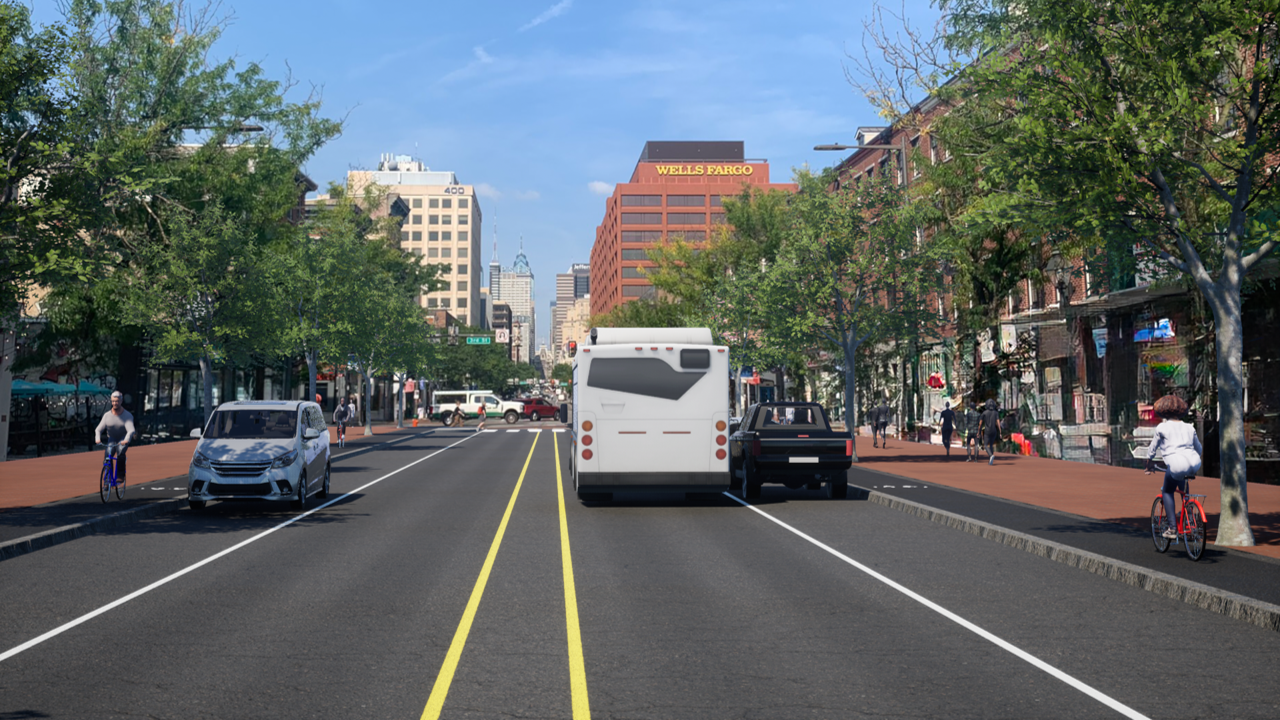
In a historic and unanimous vote yesterday, the California Air Resources Board (CARB) adopted ambitious targets for reducing greenhouse gas emissions by 2020 and 2035, a move that will compel the state's metropolitan planning organizations (MPOs) to better integrate land use and transportation planning.
"These targets are ambitious, achievable and very good news for California communities. Improved planning means cleaner air in our cities, less time stuck in your car, and healthier, more sustainable communities," said Mary Nichols, the CARB Chair. "Cities that choose to develop sustainable communities plans that meet these targets have an advantage when it comes to attracting the kinds of vibrant, healthy development that people want."
Although a number of representatives from powerful construction, development and oil industry interests lined up to oppose the targets, arguing passage would lead to fewer jobs and hurt the economy, sustainable transportation advocates said CARB was able to see through the rhetoric. They felt the vote was a watershed moment, a signal that business-as-usual transportation and land use models will no longer work.
"A growing body of research and our own data shows that smart growth is not just an aesthetic issue, it’s a real public health concern," said Jane Warner, the president and CEO of the American Lung Association in California. "By moving to more sustainable growth patterns that offer healthier transportation options, CARB's vote can help California avoid $1.66 billion in public health costs, more than 100,000 asthma attacks and other respiratory symptoms and 140 premature deaths each year."
Under California's landmark anti-sprawl bill, SB375, the state's 18 MPOs were required to set emissions reductions targets and Sustainable Communities Strategies (SCS) within regional transportation plans. In the Bay Area, the Metropolitan Transportation Commission, our MPO, will be required to complete its SCS by April 2013.
SB375 also offers financial incentives to cities that meet the targets and build dense, walkable and bikeable communities close to transit. It will also streamline the California Environmental Quality Act (CEQA) process to advance certain types of residential and mixed-use development projects.
"I think what we're seeing is kind of a realignment in the development industry," said Stuart Cohen, the executive director of TransForm, a non-profit advocating for transit and smart growth. "We saw a lot of infill builders out at the hearing yesterday saying how this was going to make smart development easier. What's really happening is that even a lot of the folks that have done the very larger sprawl development in the past have large infill arms now."
Meea Kang, a principal at Domus Development and president of the California Infill Builders Association, believes SB375 will translate into a boom for the construction industry, not the opposite, as some have claimed.
"It should make it easier to do infill development. I won't have to wait four years to get my entitlements on a project. It could be expedited and done quicker," said Kang, who testified at the hearing. "Once we can start encouraging and providing the right set of incentives, I think the private sector and the rest of the developers will just retool and find ways to make these types of developments available to the Californians who are clamoring for this."
Graham Brownstein, the statewide policy director for TransForm, said CARB also committed to work with the Strategic Growth Council (SGC), now headed by former Sacramento Mayor Heather Fargo, to develop metrics for equity and conservation "to make sure that these plans are not leading to inequitable results or disparities."
Although Brownstein called the targets a victory, he said the real battles will play out drafting local strategies at the smaller MPOs, which represent rural areas where some elected officials remain skeptical or don't even believe in global warming. Having the SGC involved, he said, will be very important to mitigate those fights.
Another challenge will be investments in public transit. At yesterday's hearing, CARB member Ron Roberts, a San Diego County supervisor, expressed concerns about reliable funding for transit. The Legislature and the Governor over the years have raided the State Transit Assistance Fund, which has increased the budget crises at transit agencies and resulted in service cuts and fare hikes across the state.
"It seems terribly unfair for a state that on the one hand wants you to do these things, and on the other hand is not willing to be the financial partner that they should be if you're going to achieve them," he said. "A lot of what you're asking us to accomplish is going to be dependent on state funding and to some extent federal funding."
Roberts had a brief and testy exchange with CARB member Daniel Sperling, the head of the UC Davis Institute of Transportation Studies, who sought to minimize the issue.
"Public transportation investment, while it's hugely important for the viability and livability and all kinds of things for these cities, in terms of the greenhouse gas plans, it really plays a relatively minor role, a very small role," said Sperling. "In fact, if you look at the MTC slide that [MTC Executive Director] Steve Heminger put up earlier, he had land use as 12 percent, pricing was 8 percent, [travel demand management] was three percent and this was a little part of the three percent. So, while we really need to help out the cities I don't think it really plays a crucial role in the attainment of these targets."
"You couldn't be wronger,"replied Roberts. "Operational dollars to run these transit agencies were basically completely removed. It's not a matter of not being able to add service. You're pulling service out. You're talking about the existing situation and exacerbating it."
He added that if people didn't have reliable transit options they would be forced to use their cars and it would affect the targets. Staff pointed out CARB was committed to advocating for state and federal transit funding sources, but Roberts, who sits on the San Diego County Metropolitan Transit System Board, said that wasn't good enough.
Sabrina Means, the legislative and regulatory assistant for the California Transit Association, agreed with the assessment that funding will be key for transit as the state looks to reduce its GHG emissions.
"We are supportive of the state's goals to reduce emissions and provide transportation alternatives but we know that without funding we just can't do more than what we're doing right now, although we would like to," she said.
Here are the targets for reductions of per capita emissions below 2005 levels adopted yesterday for 2020 and 2035:
- The San Diego Area: 7 percent and 13 percent
- Sacramento Region: 7 percent and 16 percent
- Bay Area Region: 7 percent and 15 percent
- Southern California: 8 percent and 13 percent, with the 2035 target conditioned on discussions with the MPO
- San Joaquin Valley (includes eight planning organizations): placeholder of 5 percent and 10 percent, to be revisited in 2012
- Targets for the remaining six Metropolitan Planning Organizations—the Monterey Bay, Butte, San Luis Obispo, Santa Barbara, Shasta and Tahoe Basin regions—generally match or improve upon their current plans for 2020 and 2035.





